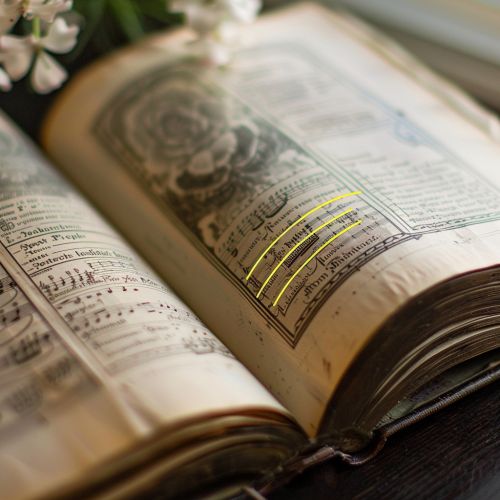Rhyme
Definition and Overview
A Rhyme is a literary device, utilized in various forms of writings, including poetry and song lyrics. It is a tool that enhances the rhythm and tonal beauty of languages, making them more engaging and enjoyable. Rhymes are created by using words that have the same, or similar, ending sound. This sound is usually produced in the final syllable of a line or verse.
Types of Rhymes
Rhymes can be categorized into various types based on their placement within lines or verses, and the sound patterns they create. Some of the most common types include end rhymes, internal rhymes, slant rhymes, eye rhymes, and identical rhymes.
End Rhymes
End rhymes occur when the last words of two or more lines of poetry share the same sounds. This is the most common type of rhyme used in English poetry.
Internal Rhymes
Internal rhymes are rhymes that occur within a single line of poetry. These rhymes can occur at the beginning and end of the line, or at some other point within the line.
Slant Rhymes
Slant rhymes, also known as half rhymes or imperfect rhymes, are words that sound similar but do not rhyme perfectly. These rhymes can add a level of complexity and subtlety to a poem.
Eye Rhymes
Eye rhymes are words that look like they should rhyme based on their spelling but do not rhyme when pronounced. These rhymes play with the visual aspect of language and can add an additional layer of meaning to a poem.
Identical Rhymes
Identical rhymes are words that are spelled and pronounced exactly the same but have different meanings. These rhymes can add a level of complexity and subtlety to a poem.
Rhyme Schemes
A rhyme scheme is the pattern of end rhymes in a stanza or poem. Rhyme schemes are usually described using letters to indicate which lines rhyme. For example, the rhyme scheme ABAB indicates that the first and third lines rhyme with each other, and the second and fourth lines rhyme with each other.
Rhyme in Different Languages
Rhyme is not exclusive to English and is used in many different languages, each with its own unique characteristics and rules. For example, in French poetry, rhyme is typically based on the sound of the final syllable, including any silent letters. In Arabic poetry, rhyme is often based on the sound of the final consonant.
Rhyme in Music
Rhyme is a fundamental element in many forms of music, particularly in song lyrics. It can help to create a rhythm and flow in the lyrics, making them more memorable and enjoyable to listen to.
Rhyme in Advertising
Rhyme is also used extensively in advertising, as it can make slogans and jingles more memorable and catchy.
See Also


